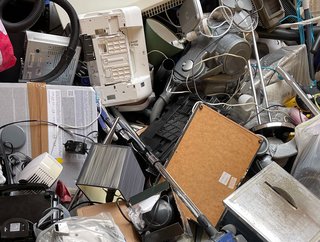Is a lack of IT management Leading Assets to more e-waste?

The tech industry is one that thrives on the new. From new iPhone launches to Windows operating systems, we all love waiting in anticipation for the next big thing in technology.
But this attitude may be fuelling a planet-sized crisis that experts believe will only get worse unless something changes soon.
What used to be a small mound of old tech discarded on landfill sites now forms mini mountains - the peak of which is growing year-on-year. An estimated 74 million tonnes of e-waste will be produced globally every year by 2030, many of which will never be recycled or reused.
The ever-growing e-waste crisis
Sustainability is high up on the agenda for organisations, yet the issue of electronic waste often gets swept under the rug, especially when discussed next to emissions tracking and our carbon footprint. With the sheer amount of electronics in use today and the fashionable trend of upgrading smartphones and other bits of tech as soon as the next upgrade is released, the problem is only going to get worse.
There are simple solutions, however. We obviously can’t force people to change their buying habits, but we can impact what happens to technology once it’s no longer deemed useful.
It’s an unfortunate reality that most technology will end up in landfill. Only when devices reach end-of-life and are unable to be mended back to a productive state of health should they then go towards recycling. The issue is many business decision-makers think these are the only two options.
For example, due in part to a global pandemic and a realisation that ownership of devices simply doesn’t make a difference, the leasing market for IT equipment has blossomed. Organisations can now enjoy the IT equipment they want, at a cost spread out over the lifecycle of the device, and with IT asset management (ITAM) support.
What’s more, once devices start to reach a point where their speed, power, and productivity start to dip - typically after 4-5 years - not only can they be traded in for a new model, but the existing one can enjoy a second life elsewhere. The price of new technology twinned with a cost of living crisis has led to new, heightened appetite in the refurbished market, while restored devices can also be donated to charitable organisations.
And there lies the real problem. The majority of organisations today only undertake device maintenance reactively, when equipment breaks down or needs immediate repair. This typically happens during work, which also means downing tools, waiting for maintenance or IT support teams to arrive, or for a brand-new IT device to be delivered.
In order to truly move the needle, businesses need to get smarter with their assets - including proactive, predictive, and preventative maintenance.
The green power of IT asset management
IT asset management - the process of managing a company’s tech estate, usage, and investments - has a key part to play in providing long-term sustainable services.
Of course, there is a human element to IT managers focusing efforts on the sustainable management of devices, but there’s also an economic factor. By better managing their tech stack, businesses can get the most out of their assets while prolonging the life cycle of them.
ITAM is about understanding what devices you have and their status - a hard task when you have hundreds or even thousands of devices. Not just laptops or smartphones either, but servers, printers, and any other network-connected device can come under the asset management umbrella.
IT asset management can therefore arm decision-makers with data that can drive more sustainable practices. For example, knowing at what stage an asset is in its lifecycle and how it’s being used can inform better, more timely purchasing decisions.
New strategies and partnerships can also be formed with companies that prioritise circular economy practices. For every product a customer buys, companies like Dell have committed to reusing or recycling an equivalent device, while Microsoft has its own zero-waste goals to reach by 2030.
Purchasing sustainable solutions is the start of the circular economy, but considerations need to be made when devices reach end-of-life. Partnering with specialist companies can take assets for reuse or recycling, and also means businesses can reap investments back from their tech spend no matter what the condition of the device.
Giving devices a second life
The contribution of businesses and organisations to the e-waste crisis cannot be underestimated. With millions of devices that could potentially be reused, refurbished, or recycled instead of heading to landfill sites, IT managers have a responsibility to better prioritise sustainable practices and solutions.
By embracing change and the principles of the circular economy, not only can businesses improve the longevity of their devices, they can prove their dedication to sustainability to staff, consumers, and stakeholders while restoring tech investments.
- How Tenaris & Tata Steel are Sustainability Champions AgainSustainability
- Colgate-Palmolive Earns 14th Successive Sustainability AwardSustainability
- Top 10: Women in Sustainability in the UK and EuropeSustainability
- E.ON Next: Customer-Centric Approach Drives Business SuccessSustainability






